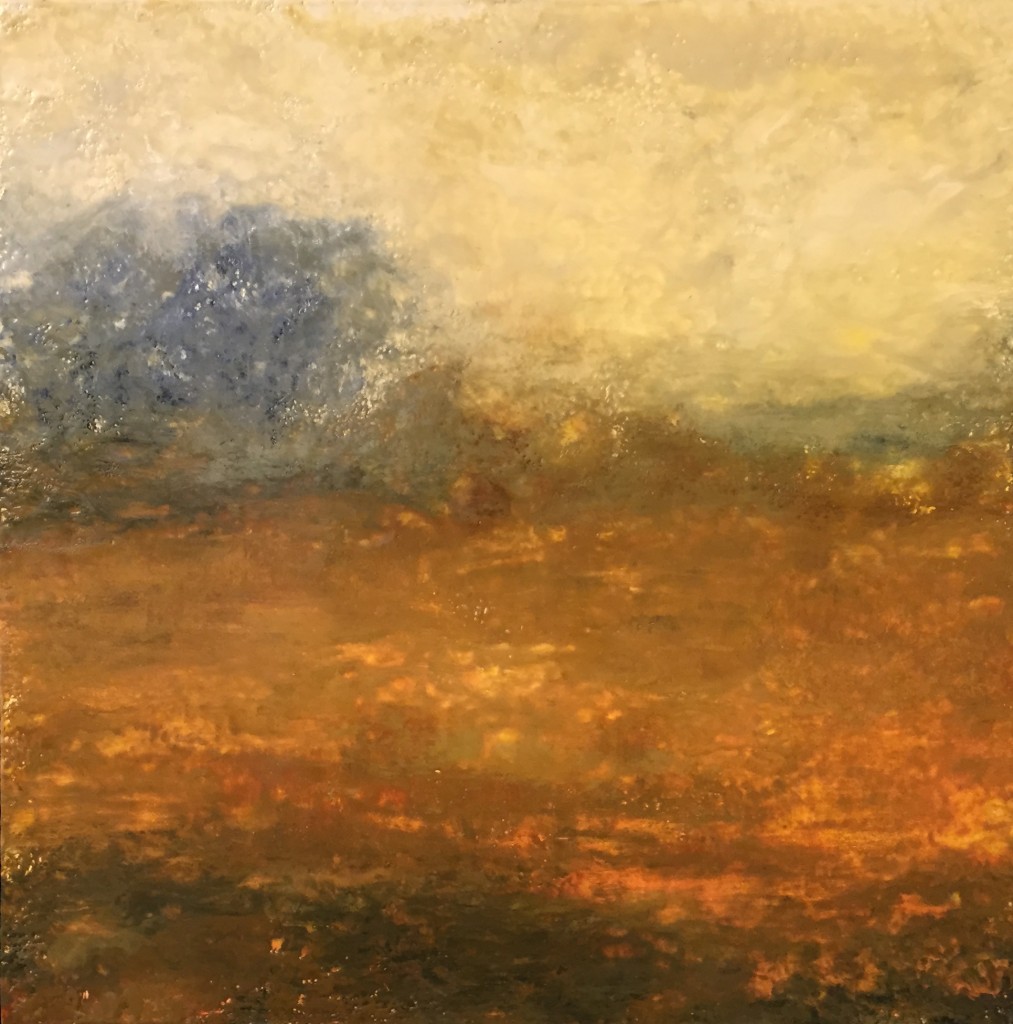Tonal meditations at Oxford
“Eternity is in love with the productions of time.” –William Blake
At the Oxford Gallery here, Jim and Jinny Hall have assembled a finely unified show of two regional artists, Karl Heerdt and Sharon Gordon, who are working in the stylistic neighborhood of Tonalism, a school of art that has drawn Jim’s devotion as a collector and dealer for many years. You’ll see many of Tonalism’s earmarks in the work of both painters: an emphasis on evoking landscape rather than denoting its details, a sense of diffuse twilight, and quiet hints of transcendence. In the 19th century, Tonalism was in part a response to the work of thinkers like Emerson and Thoreau, whose writing affirmed a Yankee Romanticism, a perception of the world where the human soul and the natural world sprang from one unifying spiritual source. I suspect neither Heerdt nor Gordon would go so far as to call themselves transcendentalists, but in the current work of both painters, the indeterminacy of what’s being depicted gives their elusive images the sense of withholding as much as they disclose–hinting at a life behind appearances that glances out at the viewer and then withdraws. The paintings return your gaze in a way that makes you want to know more about what’s happening behind the look of things. Heerdt lives and works mostly around Buffalo. Of all his work, his simple scenes drawn from the Niagara River have always captured and held my attention the longest. One of these, in this show, a very small oil, includes little more than a hump of snow to indicate the bank of the river and then a stretch of indistinct water with a few whitecaps, a scene nearly devoid of subject matter–or distinctly even visible objects. It has the simplicity of a Milton Avery, dividing two dominant colors/values diagonally. Yet it’s intensely recognizable, a glimse of our region of excruciatingly familiar gray winter light that,in January for anyone living on the shore of Lakes Erie and Ontario, becomes the dull, dreamy ground of one’s consciousness. Yet it’s masterful and seemingly effortless, his handling of the paint as essential to the effect as the way he seeks that illusion of our somber Rust Belt twilight. His other work is every bit as masterful, a tangle of brushwork up close, but, a few steps away, an amazingly precise evocation of a particular hour’s slant of light. One small oil, of another river, in Yellowstone, with vaguely purple reflections on the water, looks as if it could have been done en plein air, in a single sitting, and yet there isn’t a false move or needless bit of paint anywhere in the image. In other words, Heerdt is getting better and better. He told me at the opening that he’s trying to simplify his methods in a radical way, working toward an image from four, three, even two abstract areas of value, building outward from that flat map of light and dark. He said he’s also working in more hints of color, sometimes almost arbitrary, into what has been his past adherence to blues, grays, browns and whites. He has started a series of much larger canvases, and I can’t wait to see what emerges from that shift in scale.
Sharon Gordon’s experiments with encaustic and cold wax form the core of her portion of this show, and these mostly square, fairly small images hover at the exact halfway point between representation and abstraction. They work perfectly in either mode. They evoke Turner as much as the Tonalists, and some verge on color field painting. She found herself lured to encaustic by working for a while in cold wax and quickly became engrossed in the plastic qualities of this rapidly-drying medium. In person, Sharon does a funny pantomime of how she could easily become transfixed by one small area of an in-progress painting while holding a heat gun absent-mindedly over another part of the work’s surface, quickly burning a hole in it. She builds her images, layer by layer, giving the medium freedom to partner with her in the final product, watching as the alternation of heat and cold creates filigrees of wax, through which you can see previously hardened color underneath. The wax swirls in some paintings like a Burchfield sky and perforates in others to remind you of coral reefs under surf or tiny flashes of muted color seen through a heavy snowfall. The results are as haunting as old photographs and yet as immediate as the the way the world assembles before your eyes just before the sun rises. She’s fiercely experimental, working almost entirely from imagination, often adding sand or coffee grounds–I’ll throw almost anything in–to her medium. What’s magical about that kind of improvisational courage is that she ends up with effects that actually evoke memories of half-lit moments in the natural world, times when you’ve put everything else in your life on pause for a few moments, when looking is all that matters.
Jim Hall is a resolute pragmatist, someone whose philosophical bent draws him to early 20th century positivism, so when he talks about his devotion to Tonalism, which is intense, you’ll not hear much about the American Renaissance. Instead of transcendence, or Emerson’s oversoul, he’ll speak of how most Tonalism hints at loss, the passage of time, a sense that even the present moment is already receding into the past. You’ll feel that in many of these paintings, but you’ll also have intimations of something far more lasting than the present moment. That polarity of time and the timeless is the fundamental dialectic of all great painting.

Comments are currently closed.